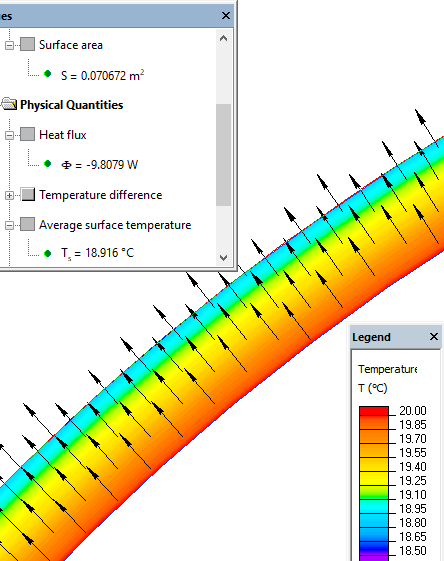Natural convection from the spherical surface
QuickField simulation example
Steel sphere divides two air environments with different temperatures.
Problem Type
Axisymmetric problem of steady-state heat transfer.
Geometry
Sphere radius R = 75 mm, thickness of the sphere's wall d = 3 mm.
Given
temperature of the inner surface of the sphere T0 = 20 °C,
temperature of the air outside the sphere T = -10 °C
thermal conductivity of the plate λplate = 0.4 W/(m·K)
Task
Calculate the temperature of the outer surface of the sphere and the heat flux passing through the surface.
Solution
The heat flux flows from hot to cold areas (in our case from inner surface of the sphere, then through the sphere toward air outside). Heat flux in the sphere is regulated by the sphere thermal conductivity. The heat exchange between air and the sphere is regulated by natural convection. We estimate that the temperatures of the sphere wall is equal to the inner surface temperature:
Tsphere = T0 = 20 °C.
This value is used for the convection coefficient calculation*:
αsurf = 4.8 W/(m²·K).
Result
Temperature of the external surface of the sphere: Tsurf = 19 °C.
Heat flux: f = 10 W (sphere surface area is 0.070 m²).

*Remark: the formulas of the similarity theory give the average value of the convection coefficient. This approach is very approximate by its nature, so there is no reason to make iterations to calculate the accurate Nusselt number related to actual surfaces temperatures.
- View simulation report in PDF
- Download simulation files (files may be viewed using any QuickField Edition).